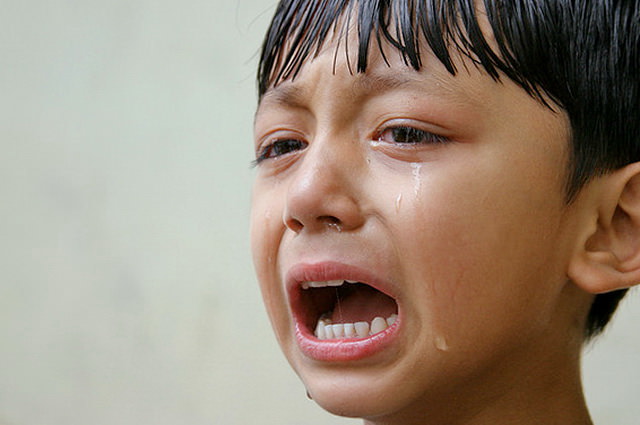Tag Archives: behavioural difficulties autistic child

Managing Behavioural Difficulties in ASD Children
Behavioural difficulties are common in children who have ASD, but with the right strategies and support, they can often be mitigated through effective management. There are myriad reasons for these difficulties, such as issues with communication, sensory processing, social interaction, and balance issues which affect active play. It’s vital that parents and caregivers understand these behaviours are not their “fault”, they are merely symptoms of the underlying difficulties the child with ASD is facing.
Understanding the Causes
The root causes of behavioural difficulties are generally as follows:
Difficulties with communication: Children with ASD typically struggle with expressive language, understanding what is being said to them, and picking up on non-verbal communication cues. This can, understandably, become quite frustrating and provoke problem behaviours.
Difficulties with social situations: The difficulties presented by social situations for a person with ASD go beyond just communication; people with ASD also struggle to understand other’s points of view (inflexible in their opinions), and grasp the “unspoken rules” of social interaction that state when to, for example, end a conversation. Due to all of this, children with ASD may shun social contact, and they are more likely to experience bullying.
Difficulties with unstructured time: People with ASD have a hard time dealing with situations where there is no set schedule, as their brains have a hard time sequencing activities on their own. For this reason, children with ASD are more likely to act out during recess or other break times, as they feel confused and frustrated.
Difficulties processing sensory information: Those with ASD often have over or under-sensitive senses, leading to a tendency to get overwhelmed or to seek stimulation to a problematic degree. They may react strongly to touch, be very picky eaters, get overwhelmed by loud noises (or be unable to concentrate over background noise), etc.
Additionally, one should always remember that people with ASD do not easily adapt to change; always be on the lookout for things in their environment or schedule that have been altered, as this may trigger problem behaviours. Illness (especially seizures, which ASD individuals may be prone to) can also trigger acting out, as the child with ASD cannot easily vocalize his or her pain. Consider using diagrams to help children express where they are feeling pain.

Troubleshooting Common Problem Areas in Children With Autism
When dealing with a child on spectrum, the presence of sudden or chronic behaviours that are aggressive, odd, or socially inappropriate can present challenges one may feel ill-equipped to understand and deal with. Being prepared ahead of time can help a great deal in managing these issues in the calm, logical way. The following questions and answers cover some of the most common problems that arise with the behaviour of children (and some adults) who have Autism Spectrum Disorder (ASD):
My child’s behaviour has changed suddenly; what should I do?
First off, have the child seen by a doctor. Children with ASD sometimes can’t identify and/or vocalize their feelings, so may not be able to express the pain caused by a medical condition that has arisen quickly, making it important to rule such out.
Once medical issues have been found absent, assess whether or not changes to the child’s routine or environment have happened recently. Remember that even small changes, such as re-arranging a room or changing lighting or shampoo brands, may upset someone with ASD and bring out “coping behaviours”.
My child doesn’t understand physical boundaries and tries to hug strangers; what should I do?
Remember that social boundaries are very challenging for someone with ASD to grasp; they quickly assume what is okay at home or with friends is okay as a general rule.
To combat this, try writing a “social story” (with pictures if possible) explaining why people hug friends and family, but not strangers. A comic strip style of format is often ideal for these.
Try to teach more appropriate ways of showing affection to strangers rather than just limiting the problem behaviour, as those with ASD should be encouraged to interact socially as much as possible/enjoyable. Suggest waving to strangers instead, for example, or holding the door open for them. Reward the child for practicing these alternate skills.
Consider conducting a general social skills “training course” for the child, explaining in story form why people greet each other in the ways they do, part as they do, etc.
My child gets very anxious during breaks and at lunch hour; how do I help her deal with this?
School break times often stress those with ASD because they are both unstructured time and often involve sensory overload (noise from many children playing, lots of movement).
Consider having a support worker stay with your child during these times and structure the break time around certain games each day to create a routine.
You can also look for special support groups at the school for those with ASD that focus on teaching children social skills in a way they can handle. This way the child both develops a peer network and receives structure and support, with someone on hand to help her troubleshoot her particular issues with social interaction.
Give your child methods for indicating her distress to staff if she can’t easily vocalize it, such as stress scales, so that staff know when it’s time for a “time out” from social situations. Likewise, teach your child healthy relaxation techniques to use during these breaks, such as listening to soft music or practicing deep breathing.
If breaks are still simply too overwhelming, seek permission from the school for your child to spend them in the library or computer room.

